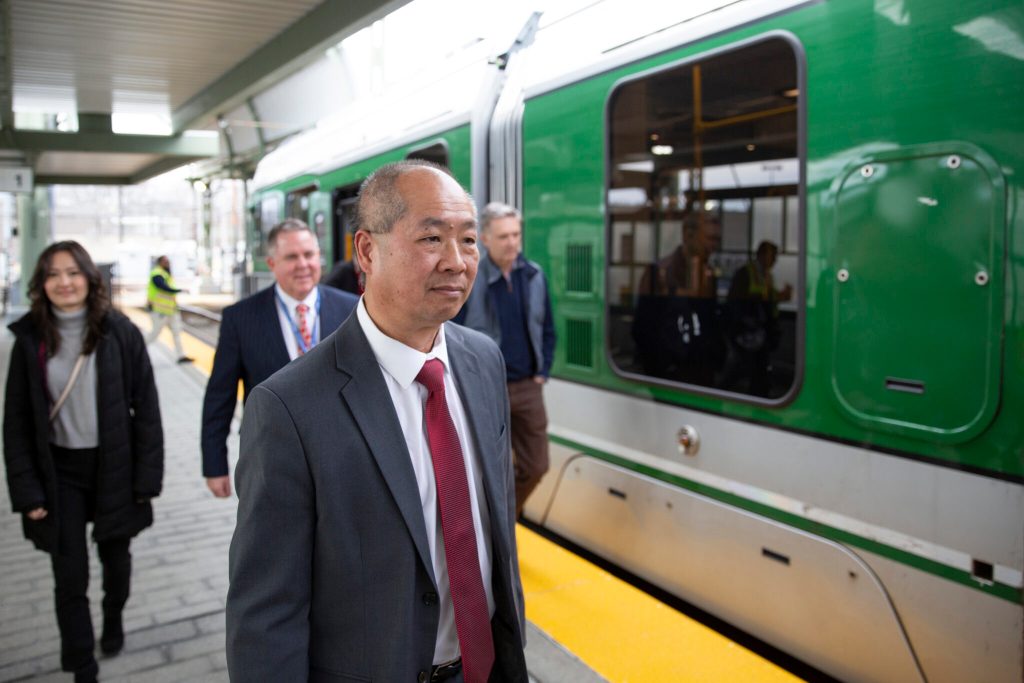
MBTA RIDERS who slogged through this year’s shutdowns should brace themselves for more next year, though they’ll be more limited in scope and duration, according to transit officials.
Phil Eng, the MBTA’s general manager, told members of the public transit agency’s oversight board that the focus on fixing tracks is paying off with better rush hour service on the various transit lines, and the MBTA will in 2025 turn more attention to fixing its signaling infrastructure on the Red and Orange lines. The signal work is slated to last into 2026.
Next year’s shutdowns will come as T officials and public transit advocates will be lobbying Beacon Hill lawmakers to help the agency, which is facing a budget gap that totals hundreds of millions of dollars. A 31-member transportation task force is set to release a report at the end of 2024 on how to fund the T as well as roads and bridges.
“While there will be some outages needed to continue the work, it won’t be to the level of this year,” Eng told the board on Thursday.
Additional information on the shutdowns will be released early next month, according to T officials. During the shutdowns, passengers who have dealt with years of unreliable service are often forced to climb aboard shuttle buses, and in some cases sit in traffic to get to their destination.
The MBTA remains on pace to eliminate speed restrictions across all its lines by the end of the year. The restrictions were imposed systemwide last year to allow trains to operate, albeit slowly, on tracks declared defective while T workers sought to fix the tracks.
The last of the Red Line restrictions are due to be lifted by Monday, and the Green Line is last up with a target date of December 21. The work has involved replacing rails and rail ties, requiring the MBTA to suspend service for days at a time.
Before the shutdowns became de rigueur, the T typically tried to get patchwork repairs done in the limited hours that the MBTA shut down overnight, and before service restarted around 5 a.m. “It’s insane when you look back at it,” said Quincy Mayor Tom Koch, a member of the MBTA’s board of directors, about years worth of work getting done during the shutdowns.
The shutdowns this year enabled 40 years worth of overnight work to occur, according to Eng. The 24 days of the Red Line shutdown saw 600 workers working daily with more than 100 pieces of equipment, replacing nearly 70,000 feet of rail.
Next year’s track work is meant to keep the tracks in a “state of good repair,” according to Eng. More work will be done during the weekends, and the T is planning station overhauls at Ruggles on the Orange Line and Symphony on the Green Line.
The work next year is considered the “next key piece” in running reliable MBTA service and “more of making sure we don’t go backwards on our track program,” Eng said.
Eng said reliability and frequency – both considered crucial to bringing ridership up past pre-pandemic levels – is up on a number of lines. The time in between Blue Line trains is down during rush hour, so “if you miss one you’re just minutes from the next one,” he said.
On the Orange Line, passengers are now waiting six minutes between trains, down from the 12 minutes when Eng started as general manager in April 2023.
Anecdotally, Eng said he is seeing heavier ridership on Mondays and Fridays, which has been light in the years after the pandemic, as more people worked from home.
Tom McGee, the chair of the MBTA’s board of directors and former mayor of Lynn, agreed that the T service levels have improved. “I’ve seen it on a number of lines. It’s a lot quicker than I even anticipated,” he said.
The post More MBTA shutdowns expected in 2025 appeared first on CommonWealth Beacon.

